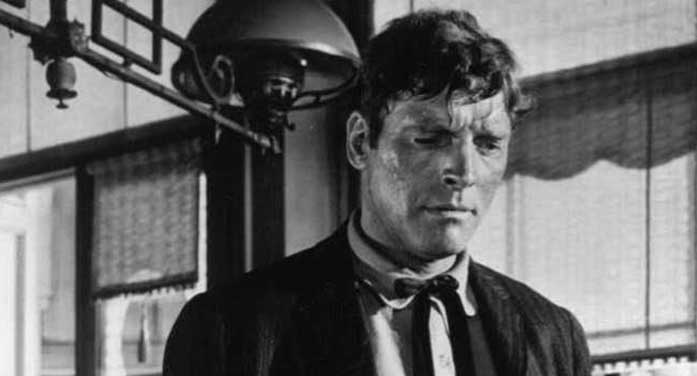 My first encounter with Wyatt Earp’s legend came via the 1957 movie Gunfight at the O.K. Corral. Directed by John Sturges and starring Burt Lancaster as Earp, it was a dramatization built around the historical gunfight that took place in Tombstone, Arizona Territory, on Oct. 26, 1881.
My first encounter with Wyatt Earp’s legend came via the 1957 movie Gunfight at the O.K. Corral. Directed by John Sturges and starring Burt Lancaster as Earp, it was a dramatization built around the historical gunfight that took place in Tombstone, Arizona Territory, on Oct. 26, 1881.
The picture it painted was heroic. You had no difficulty sorting the good guys from the bad guys. But if you were in any doubt, Frankie Laine’s stirring tones over the closing credits cleared it up: “Boot Hill, Boot Hill/So cold, so still/There they lie by side/The killers that died/In the gunfight at O.K. Corral.”
A recent online exchange between two American conservative journalists brought all this back to mind.
To quote Kevin Williamson: “Wyatt Earp the historical figure was a pimp, a cheat, a claim-jumper, probably a horse thief, and a cold-blooded murderer. He was also a low-rent con artist who tried to sell people painted rocks he claimed were gold nuggets. He had an arrest record as long as your arm and continued as a career criminal into his old age, from fixing boxing matches to fixing card games.”
Earp was born in Illinois in 1848 and died in Los Angeles in 1929, just two months short of his 81st birthday. In between, he lived in a number of places, but the legend attached to him mostly derives from the years 1874 to 1882. During this period, he did lawman stints in Wichita, Dodge City and Tombstone.
The famous gunfight – which left three men dead – was controversial. Accusations of murder were levelled against Earp, his brothers and their ally, the gambler Doc Holliday. They were alleged to have used the law as a shield in pursuit of a feud. However, a judicial inquiry decided they’d acted lawfully.
Still, intense enmity lingered and two of Earp’s brothers were subsequently shot, one crippled and the other murdered. In retaliation, Earp organized a posse for what came to be known as the “vendetta ride,” aimed at hunting down those he deemed responsible. Four men were killed in the ensuing two weeks, which Williamson characterizes as Earp abusing “his badge to carry out extrajudicial executions when the legal system didn’t give him the outcome he wanted.”
After Tombstone, Earp spent time in various places, predominantly California. His activities included gambling, real estate, saloon keeping and mining. There were lucrative paydays, but his financial circumstances mostly tended to the modest side.
Then, in his later years, Earp sometimes acted as a technical adviser on silent western movies. Two of the genre’s biggest stars – William S. Hart and Tom Mix – were pallbearers at his funeral.
The event that turbocharged and sanitized the Earp reputation transpired a couple of years after he died. Published in 1931, Stuart Lake’s Wyatt Earp: Frontier Marshal was a big hit, creating the image of a fearlessly heroic lawman who single-handedly cleaned up chaotic and crime-infested frontier towns.
Although the book was initially viewed as an accurate telling, it has come to be seen as significantly fictitious. One critique calls it “an imaginative hoax, a fabrication mixed with just enough fact to give it credibility.”
Nonetheless, Lake’s book established the template for an Earp narrative that dominated the next several decades. Tailor-made for mass appeal storytelling, it was catnip for Hollywood.
Director John Ford’s My Darling Clementine wasn’t the first movie about Earp, but it was head and shoulders above its predecessors. Released in 1946 and starring Henry Fonda, it’s regarded as a cinematic classic and one of the best things the legendary director ever did. And Ford – who was acquainted with the elderly Earp in the 1920s – hewed to Lake’s line.
On television, the most famous exposition was The Life and Legend of Wyatt Earp starring Hugh O’Brian. It debuted in September 1955, contained 229 half-hour episodes spread over six seasons and stayed true to the heroic theme.
So what’s the bottom line? Righteous lawman or career criminal?
I suspect the answer is both, even at the same time.
While Earp’s lawman exploits may have been grossly exaggerated, there was a genuine component to them. He did tackle some bad guys. And if righteous is an inappropriate term, substitute fearless instead.
But that doesn’t necessarily invalidate Williamson’s indictment. The real Earp was no angel and Williamson hasn’t conjured accusations out of thin air.
People can be complicated.
Troy Media columnist Pat Murphy casts a history buff’s eye at the goings-on in our world. Never cynical – well, perhaps a little bit. For interview requests, click here.
The opinions expressed by our columnists and contributors are theirs alone and do not inherently or expressly reflect the views of our publication.
© Troy Media
Troy Media is an editorial content provider to media outlets and its own hosted community news outlets across Canada.


